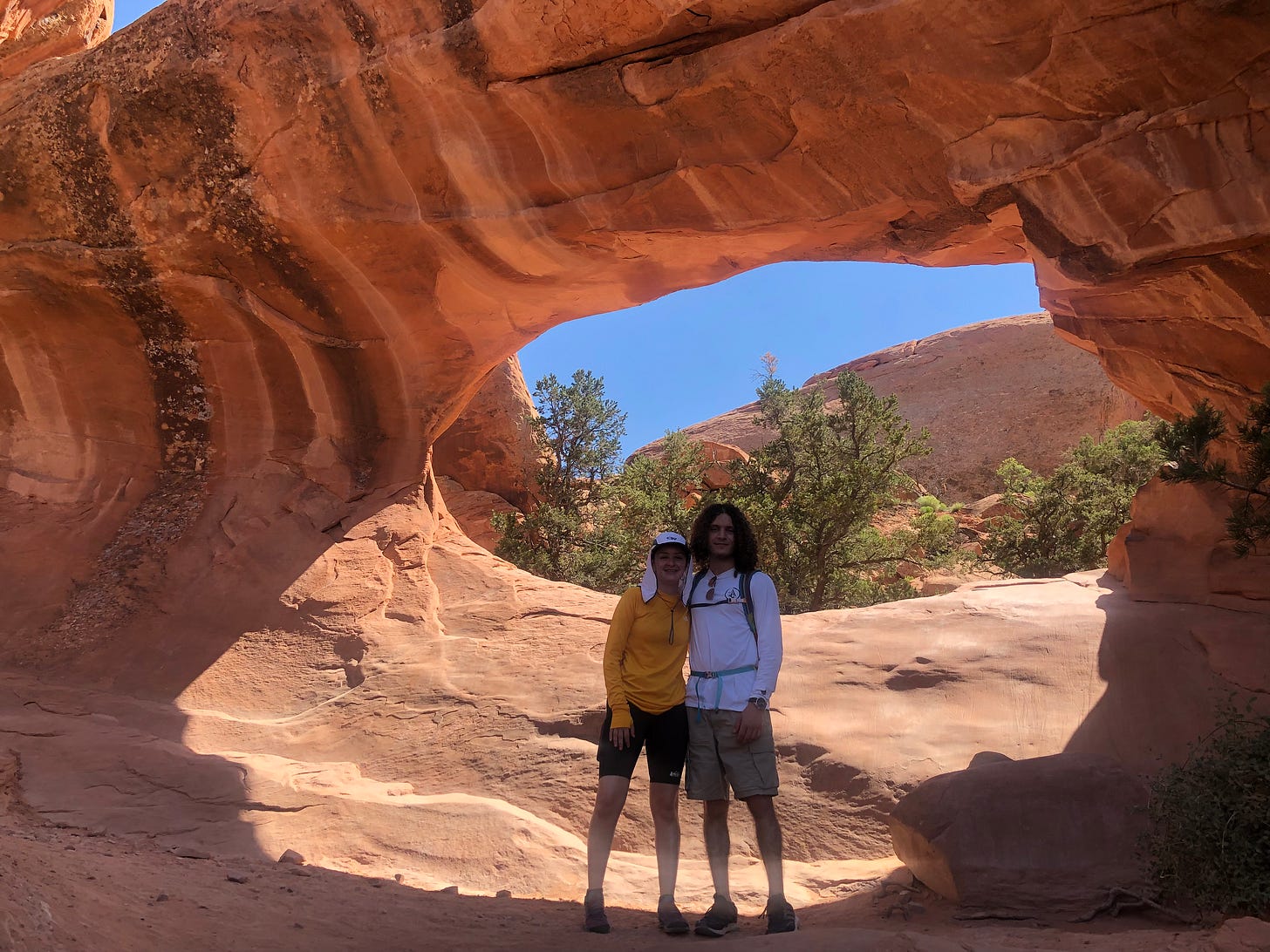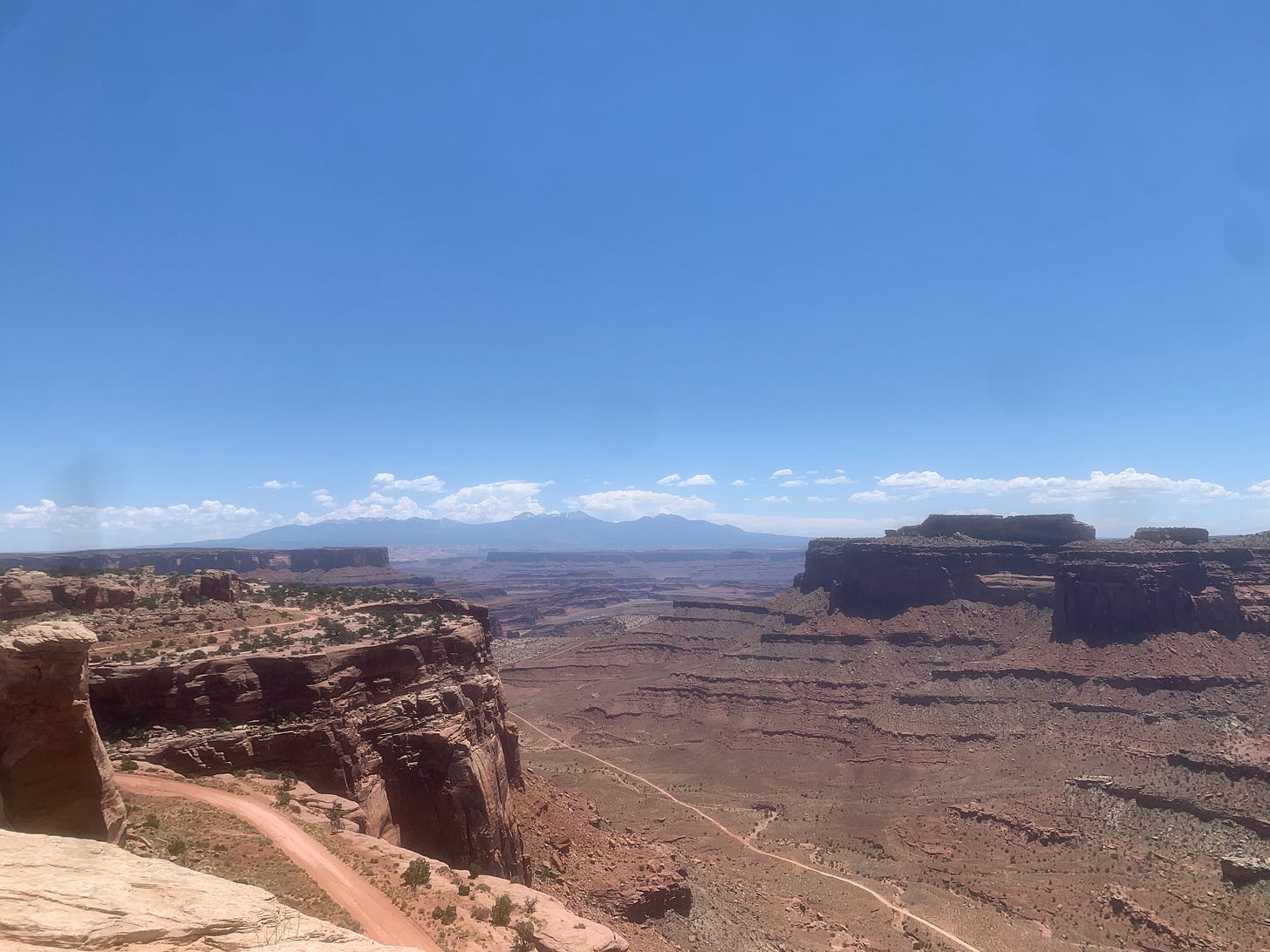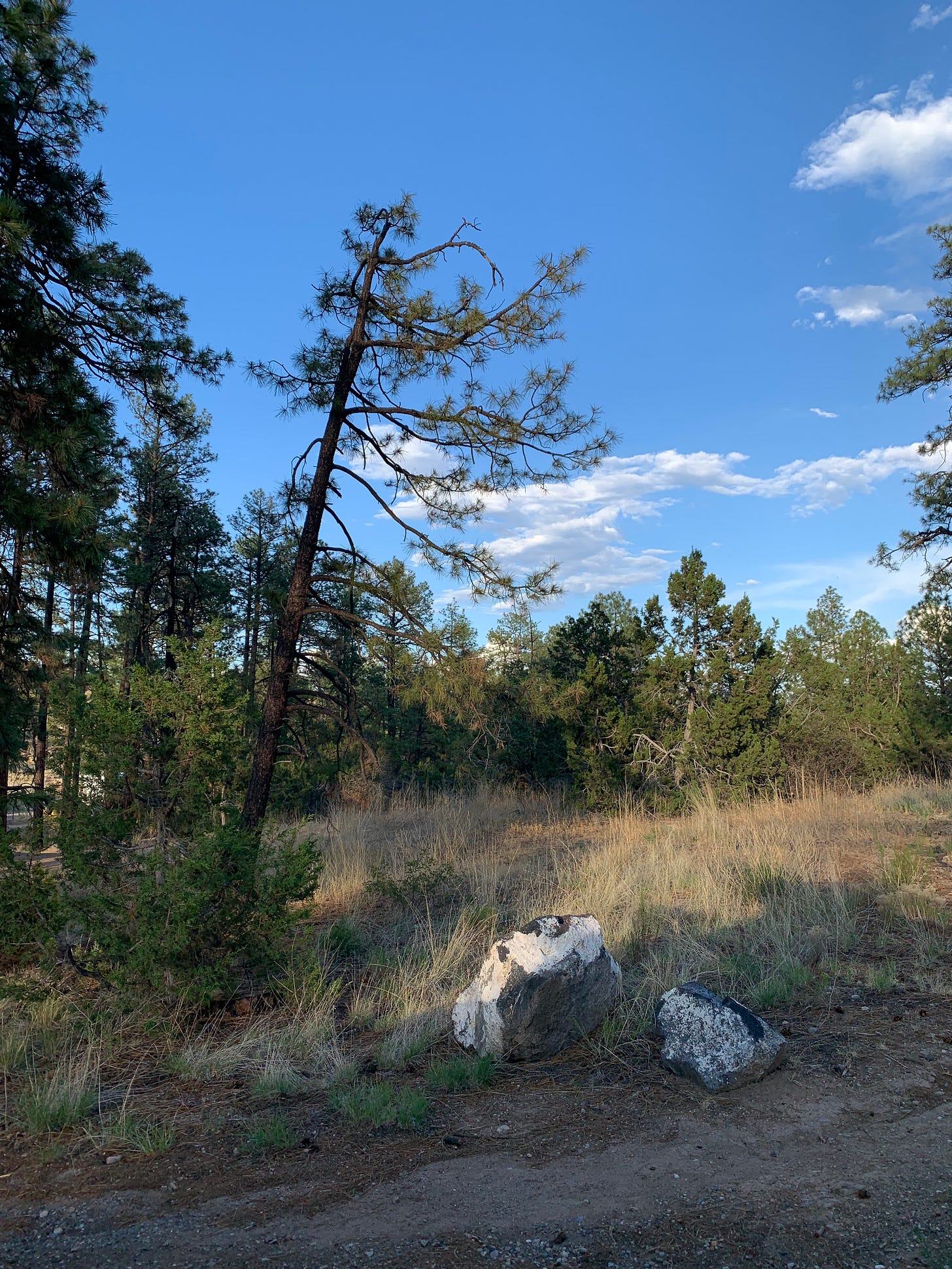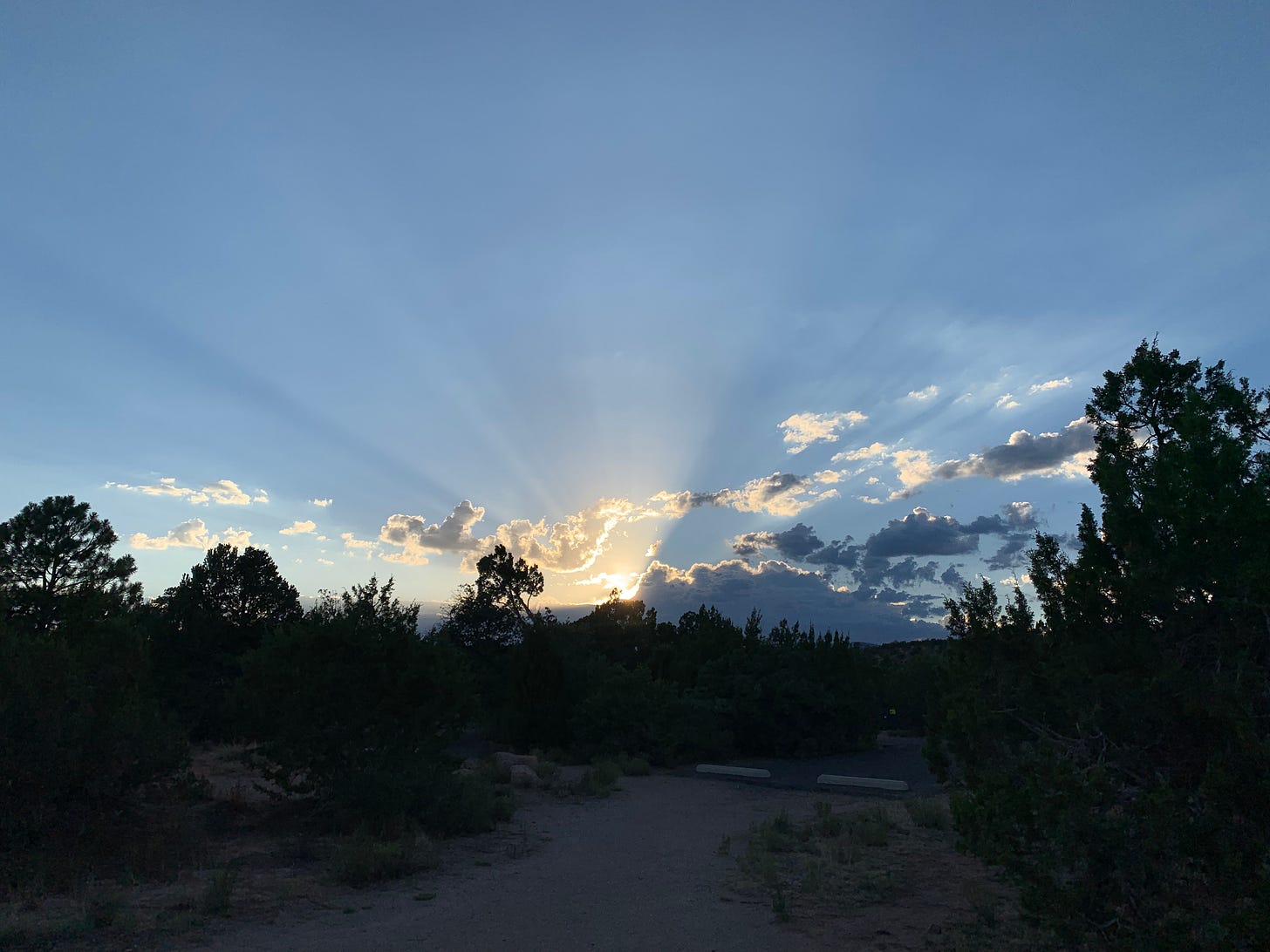I’ve been looking to decenter myself in my own writing. In an effort to adopt a kind of universalized voice, I’ve been trying to arise out of my point of view in my written work so that it may speak on behalf of a body that is not merely my own. I aspire to write impersonally, void of my many neuroses and biases. Perhaps it’s a silly aspiration, desiring to do the impossible: to transcend one’s own mind. And as Cervantes so poignantly reminds us, “If a man seeks the impossible, the possible may justly be denied him.”1
Yet I believe there is value in writing that is representative, I think it demonstrates an author’s capacity to take the temperature of the body that concerns their work. Such temperature-taking is part and parcel of the work that physicians of culture – as Nietzsche described them – do. Many flock to retrieve the mantle Nietzsche left behind, pathologizing their culture’s supposed ills. They offer cures which, much to Nietzsche’s probable horror, take the form of what can only derogatorily be described as self-help books. Though from time to time, a true physician arises from the crowd of cultural psychologists and manages to successfully diagnose their society. And when the physician does so, they are unapologetic, rarely conditioning their claims – their diagnosis is written with a sense of self-assurance. Think of someone like Sontag: her writing is blunt, and it rarely makes disclaimers. Why? Because the writing is not opinionated.
I do not take Notes on “Camp” (1964), for instance, to be an essay expressing Susan Sontag’s view on aesthetic sensibility. It is much more than that. It transcends Sontag. Sontag may be the author of the writing, but the writing itself is a delegate or trustee of a view that can be universalized such that others could identify with the position this writing represents. Thus, what is characteristic of this kind of writing is its impersonal nature. It’s not about the author and their views: it looks outward, beyond the author and toward the world itself.
I struggle with this kind of writing because, truthfully, I’m sure of very little. I grew up in a noisy, immeasurably dynamic world. I can’t say whether it’s always been this way, but I find making unconditional claims about it nearly impossible because of the speed at which this world moves. This trouble is compounded by the single fact of which I am assured: human beings are plural beings.
Speaking on behalf of others would be a shorter order if we shared a nature in the way ants or bees do. Fortunately, we do not share this kind of consciousness; thus, my ends may not be yours, and your tastes may be miles from mine. So, what degree of chutzpah must I possess to even attempt to write on someone else’s behalf? Let’s just say, not enough to write like Walter Benjamin… yet. But since I insist on always taking the path of most resistance, I will keep working to write impersonally so as to develop a voice that can speak for others whilst simultaneously respecting the plurality of our condition.
Yet, for this piece, I ask that we put my aspirations aside. Allow me to get personal for everything in and about my life is on the precipice of changing, and the unnerving thought of the unlived has made space for an extended rumination on the already lived. Consequently, I’ve been reminiscing – quelle surprise – about the summer of 2023. A turning point for me. The summer embodied the pivot from under to upperclassmen at university, and it was probably among the first times in my adolescence that I felt assured in who I was becoming.2
The summer began rather unremarkably. I came home to my beloved New Mexico and felt a wave of calm wash over me as soon as I stepped out of Albuquerque’s Sunport. This was in large part owing to the fact that I was no longer existing in a semi-hostile living arrangement, but deranged roommate aside, I always come home to the same feeling. A profound, sweet serenity.
I had landed an internship that I suppose some would call prestigious that summer. I was working for the Department of Justice as an intern for the Civil Division at the District Attorney’s Office, and despite how flashy that sounds, it was dreadful work. I wasn’t paid a dime and had to pay for a monthly pass at a parking garage on Second and Gold, downtown. And it being downtown Albuquerque, I frequently encountered piles of human feces, homeless men pleasuring themselves on street corners, and fentanyl zombies on my walk to the office. Every harrowing walk from my cherished Volkswagen involved me clutching my pepper spray – which I had to get assurance from the U.S. Marshals to take into the office, evidently, the Marshals had little experience existing as a petite woman in Albuquerque – and counting down the hours until I could return to make the drive back home.
The work, as in the preceding summer, looked good for the resume, but the day-to-day doing made me want to jump out of my 13-story window. The most significant thing I took from my time at the DOJ was that I would henceforth do whatever in my power to never take up work with which I didn’t identify. I had taken a course on Marx that spring, and we’ll posit that “Estranged Labor” had radicalized me.
Despite the attitude I bore toward my work, I quickly became an office favorite among the attorneys. Maybe it was owing to the fact that my fellow intern was universally recognized as an insufferable human being, making me the de facto favorite. Or perhaps it was because my attorneys were runners and our common hobby earned me an invitation to their lunch hour that they opted to use as “outside time.” Though, truthfully, it’s likely because most of my attorneys were older, and for reasons unknown, I tend to be a smashing success with the old-enough-to-be-eligible-for-Medicare crowd. Nevertheless, their presence made the working day less grueling to the extent that by July, the window near my cubicle became less appealing to jump through.
An upshot of the DOJ gig was that our last week included a field trip to the FBI field office. This excursion involved us being taken to a shooting range where we shot everything from a small handgun to a semi-automatic M-16. Coming from a civilian family that didn’t hunt, it was my first time holding and firing a gun. The experience cemented my belief that any civilized society with half its wits about it ought to forbid civilians from carrying because, frankly, guns are too much fun to shoot. That’s where the trouble begins and usually about where it spirals into entirely avoidable catastrophe.
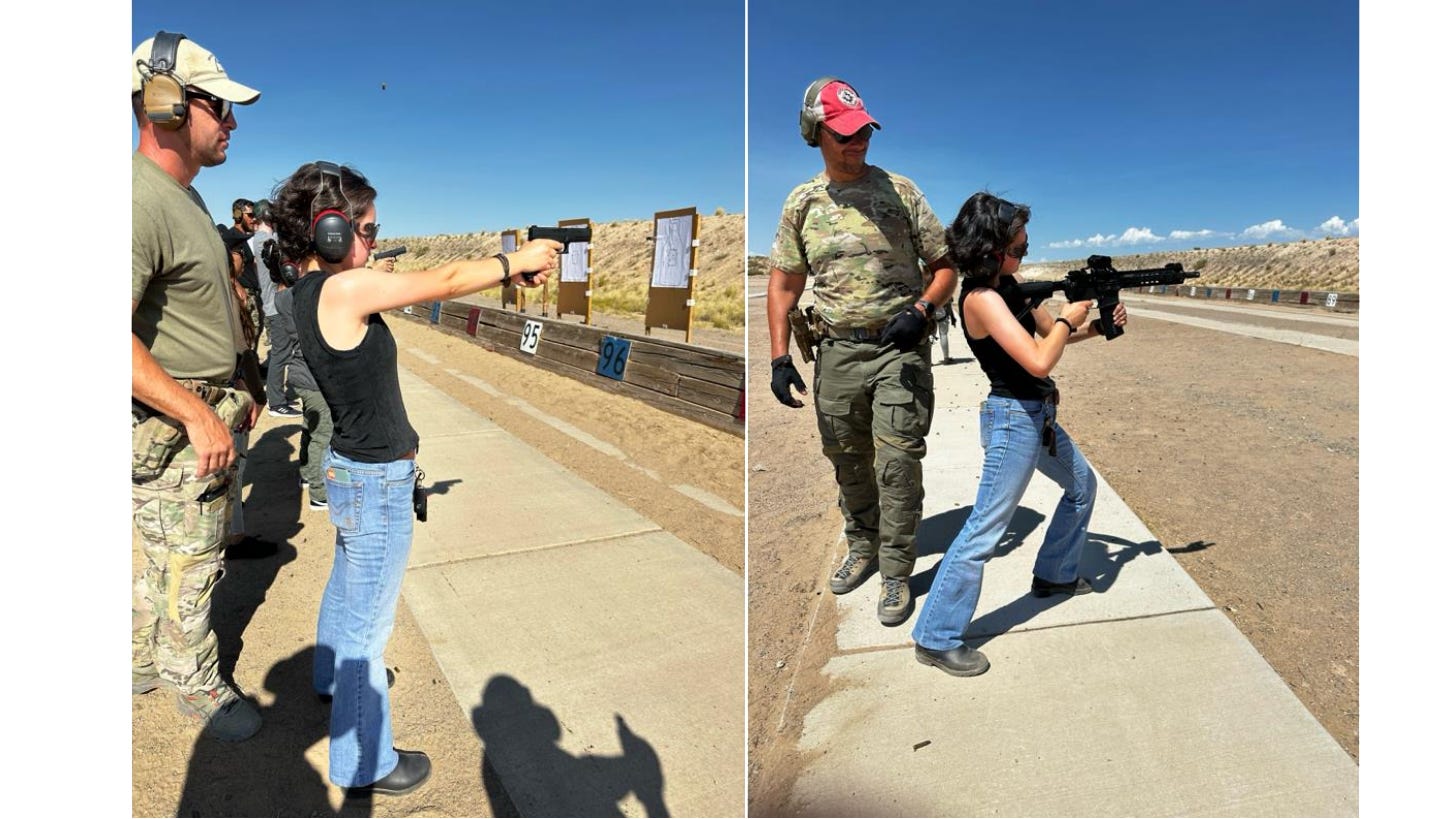
Alas, most of my memories from that summer are from my time spent outside the office. The DOJ insisted on freezing its employees, perhaps into a state resembling alertness, which nonetheless left me with the need to spend every non-working hour outside. I spent hours upon hours out in the desert that summer, to the extent that by the end of it, I almost looked Mizrahi. Hours of running and biking around my neighborhood left me with a tan so dark that my Yemenis great-grandmother would have been proud. That summer undoubtedly cemented a love for training at altitude in what individuals who are not masochistic deem unbearably high temperatures. The added challenge of pushing my body to its limits in hot, dry temperatures gave me an unrivaled rush.
This rush transposed to another one of my hobbies, hiking. In early July, just as the monsoon season had started in New Mexico, my brother and I decided to spend a long weekend up in Utah at Arches, take a day for Canyonlands, and close out the trip at Mesa Verde in Cortez, Colorado. It was nothing short of spectacular. Growing up in the Four Corners with immigrant parents who yearned to explore this alien landscape, we had been to these places before as kids. Still, being kids who’d yet to be enlightened, we didn’t appreciate these places at the ripe ages of 9 and 12 respectively.
Now, we were 23 and 19, nearing-enlightenment, with a great appreciation for the outdoors. Particularly, the American West. And we were, and still are, the greatest of friends. My brother and I have a special kind of sibling bond. Perhaps it is owed to growing up relatively isolated in a foreign land with a culture neither of us could quite crack as kids and still have trouble identifying with as young adults. I’m unsure. Whatever the catalyst, my brother makes for the ideal traveling partner. We packed my Bug with several maps (because we’re insufferably analogue like that), dried fruit for several days, a carton of local craft beer, and set off for the road.
For the Utah leg, we stayed in a charming refurbished motel in Monticello, a small town south of Moab. We stuck our beers in the mini-fridge and crashed on the night of arrival with an early wake-up call set for Arches. For two days, we drove into town in the morning, grabbed a burrito and a coffee at a local café, and set off for the parks. We would hike for six to eight hours in the Utah summer heat, with the forecast hitting 95º daily.3 It was sweat-drenched freedom at its finest. We talked nonsense and horsed around and reminisced for hours on end. And we didn’t get sick of each other despite spending every waking minute of the day together.
And not that anyone’s asking for my travel advice, but if you’re visiting Moab: I want you to over-stand me when I say that Canyonlands is far more worth your time than Arches. I know Edward Abbey spent his summer at Arches and you likely have some inclination to do the same, but Canyonlands is unimaginable in a way that Arches isn’t. You need to see Canyonlands to believe it… and you still may find yourself in a state of disbelief by what you do see.
On one particularly memorable trail, my brother and I began our hike amongst a field of tall grass. The landscape resembled more of a lush Nebraskan plain than the dry and desolate terrain we’d grown accustomed to in southern Utah. Yet as the trail went on, the grass thinned out, leaving in its wake a familiar increasingly barren, sandy red landscape. Not much grows on red rock: it’s dry and largely infertile. Left in the grasses wake were remnants of old, dried-up trees and desert crawlers who’d met their demise – trés tragique. Eventually, the trail ended at a cliffside where, for miles and miles, all you could see were the twists and turns of hundreds of canyons. It’s a sight burned into my mind. Every layer of rock, detailing geologic time, was visible to the naked eye.
Nothing obstructed your view. You could see the point at which the Green and Colorado rivers met, but it was deadly silent on the cliffside. No trickle of water, rustle of grass, or scurries of lizards could be heard. It was as if you were completely frozen in time. In Death Comes for the Archbishop (1927), Willa Cather explores the concept of time in the American West. She ultimately puts forth an image of a place where time moves at such a snail’s pace that it appears unchanging altogether. I think she’s right to conceive of this place in such a way. There’s something about being in a place like Canyonlands, where geologic time is so brazenly captured within the landscape itself that makes you feel as if you’re suspended in time. It’s almost like being frozen within a picture, unable to jump back into a plane where the categories of space and time govern one’s experience of reality.
Alas, we humans have worldly obligations to which we must attend which left my brother and I with little choice but to leave Utah for Colorado. We drove to Cortez, Colorado following our time in Canyonlands to spend the night at the shittiest Eco-Lodge motel you’ve ever seen. The place was filthy, but it was cheap. So, we showered with our Birkenstocks on and slept in as many clothes as possible to avoid making contact with the sheets we weren’t all that sure were clean. We dashed out of there at 8:30 the next morning. I reheated our burritos wrapped in aluminum foil from the day before by placing them on the windshield of my car. By the time we got back from our first hike of the day, they were warm: cheese melted, and tortillas crisped to perfection as if they’d been wrapped 15 minutes before.
We closed out the day of hiking and our thus vacation with iced coffees from a local café in Mancos. A teeny tiny town east of Cortez that has murals, in the style of Diego Rivera, painted on many of its buildings. It was so green then, with Cass Eliot and Lana Del Rey gently pouring out from the speakers of my Bug, leaning on the front hood of the car sipping our coffees – we couldn’t help but feel as if we were cast in a movie. The next great American road trip, hijacked by two transplants, of course.
Looking back, that whole summer feels like a movie. In the latter half, upon returning from my vacation, I had begun seeing someone. The experience taught me that for all my proclamations against the bourgeoisie, I couldn’t fall in love with someone who wasn’t an intellectual too (not that I was in love then, I wasn’t). Indeed, staying up late drinking cheap tequila to talk about Foucault and the opera had become habitual and a remnant expectation. He lived in Santa Fe, and I would make the 90-minute roundtrip up north at least twice a week to see him.4 That drive is still among my favorites to make. I still know every exit, can predict the subtlest of changes in scenery, and name every pueblo along the interstate.
The best stretch of that drive happens about midway through. Coasting north of 5,000 feet above sea level, the ground below your tires suddenly, with no warning, begins to lift such that in no more than three miles, you find yourself 20 minutes from Santa Fe at 7,000 feet. The air gets ever so slightly thinner, and the temperature drops by exactly 10º. You’re in high country now.
I love this stretch of the drive because of the junipers that surround the interstate. Against the tan background of desert shrubs, these trees, with their dark green shade and circular form, resemble polka dots against the terrain. They provide the perfect foreground for the formidable outline of the Sangre de Cristo mountains that lie further north. An offshoot of the Southern Rockies, whose name translates to Blood of Christ, the Sangre are my very favorite mountains. According to legend, they’re named after the last words uttered by a Spanish priest killed by the Natives along the peaks. They’re beautiful all year round, but especially so in the autumn, when the aspen leaves turn a marigold yellow, making for the most stunning contrast of colors against the blueness of the enormous New Mexican sky.
The Sangre neighbors another range of mountains to the west. Always visible on the drive to Santa Fe, stand the Jemez. Most Americans who are familiar with these mountains recognize them as the host of the City Upon the Hill: Los Alamos. Indeed, the city, which is fortified by checkpoints armed by the National Guard, experienced a spike in visits that summer as Oppenheimer had just been released in cinemas across the country. However, my brother, father, and I were there for different reasons. We were making our way to Bandelier National Monument. A patch of preserved wilderness whose beauty can only be appreciated by those with a soft spot for the southwest.
Beauty, I believe, takes two forms: blatant and subtle. The former can be found in places like Arches. Blatant beauty overwhelms your senses, it leaves you speechless. In awe of the natural world’s features, the sheer force of blatant beauty is almost oppressive. You feel unable to move amongst it, rendered immobile in your own amazement. Subtle beauty, which is found in places like Bandelier, charms your senses. It must work its way into your senses. Typically, this is done by calming you into a state of tranquility. This sense of serenity is empowering as it is usually in these places – where one is at peace – where they feel most inspired to create.
Indeed, camping at Bandelier with my guys left me feeling recharged and inspired. In short, it had put me in the ideal headspace to make the most of the last few weeks of summer. Craving a wide variety of literary prose, I read Stegner, Baldwin, Orwell, Kerouac, and Abbey. Unfortunately, this list did little to prepare me for my first foray into Hegel, but it fed my soul – a feat even Hegel couldn’t quite conquer. So, just like that: it was the end of August, and I was back in Boston trying to leave freshmen with a good enough impression of the History of Ideas Program at the Academic Fair to consider tacking it onto their burgeoning list of prospective majors and minors.
So, you might wonder – given all that I’ve said about despising what I spent the majority of time doing – why is it that I nonetheless think so fondly of the Summer of 2023? Well, very simply, it’s because it was the last summer I got to spend with my family in my favorite place.
I’m very lucky to have a tight-knit nuclear family. This is again likely owed to our immigration experience. When you move to another country, on a continent you know little about, with a culture you don’t understand, and a language you feel uncomfortable speaking, you often take solace in the familiar. For all of us, the familiar was each other. And despite us having an at-times unbelievably dysfunctional dynamic, our support of and for one another is never in question or up for debate. For this, I am and will always be incredibly grateful.
That summer marked the last time my brother and I lived under the same roof. He’d finished his B.S./M.S. that spring and had completely moved out of my parents’ place by the new year. Moreover, I would regrettably spend the following summer suffering from serious homesickness in Waltham. Thus, it ended up becoming the last summer I had in New Mexico as an undergraduate, and despite making the most out of my time there, it wasn’t nearly enough. Alas, I suppose that scarcity reveals the true value of the things we hold dear, and as I find new summers upon me, I can’t help but feel that they pale in comparison to this one.
I didn’t have my dream internship, I didn’t find my life partner, and I didn’t maximize my productivity. I did so much more. I lived, learned a thing or two, hiked many trails along the way, and spent my time with those who I loved most. In short, ‘twas a summer well spent.
Miguel de Cervantes, Don Quixote, trans. Edith Grossman (HarperCollins: New York, 2003), 286.
Of course, that version of me has long since evolved. Nevertheless, I’m very fond of that version. I’d like to think I knew my values then and did my best to live by them.
In the week following our trip to Moab, the forecast averaged 105º daily. Upon hearing about my vacation plans, one of my favorite attorneys, an older gentleman hailing from a prominent family that had lived in New Mexico since the days of the conquistadors, warned me that I’d “sweat to death.” Alas, when I came back to the office dry and alive, I pulled up the updated forecast in Utah before him, smirked, and assured him God had been on my side in Mormon country.
Rest assured that my ballooning carbon footprint was very much felt by my shrinking wallet.




